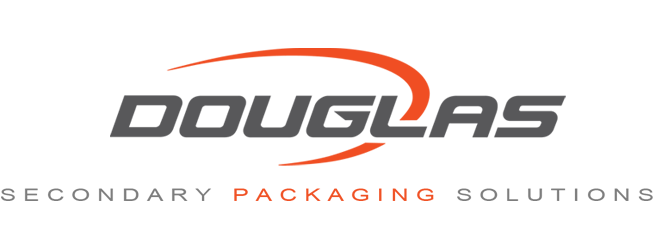Manufacturing safety is essential to preventing or reducing the risk of workplace injuries. All manufacturers want their plants to run as smoothly and efficiently as possible, but the safety of their employees is of the utmost priority. It’s also important to note that workplace safety cannot exist on best practices and policies alone. Everyone needs to be aware of and involved in executing safe practices to create a safe working environment. How well employees understand and follow defined safety standards can make all the difference.
The foundation of any successful workplace safety effort is encouraging employees to identify unsafe behaviors and opportunities for improvement—while also making well-informed safety decisions during daily routine tasks. At Douglas, we’re passionate about making the world of secondary packaging as efficient and safe as possible. So today, we’ll be offering a few helpful tips to ensure you have a safe experience when working with our secondary packaging machines.
1. Wear Proper Safety Equipment
In situations where hazards cannot be completely eliminated, Douglas will provide the appropriate personal protection equipment (PPE) to employees. Employees are fully trained on the hazards associated with their work and the proper types of PPE required, along with proper machine maintenance, care and use. In addition to a subsidy for footwear, all other PPE is provided at no cost to the employee. Employee-owned PPE can also be used—as long as it is approved and maintained according to Douglas standards.
Recently added, to increase our level of machine safety, are bump caps. Bump caps (or hard hats) are required when leveling machines and working inside the machine while the head is below components (including the tool bar, side plate, cross member, magazine and conveyor). We also require use of bump caps when using a hoist or other lifting devices to lift materials overhead and when the work area is under overhead lift work.
2. Follow Lockout/Tagout Procedures
Proper lockout/tagout (LOTO) practices and procedures protect workers from the release of hazardous energy. Lockout/tagout identifies specific actions and procedures for controlling hazardous energy during the servicing and maintenance of our secondary packaging machines.Douglas Machine’s strategy is to remove the hazard and ensure it cannot be restored without the knowledge of the person(s) who initially removed the hazard. Stored energy such as capacitors, springs, pressurized glue systems, pressurized air and machine sections with stored energy utilizing gravity will be relieved of their energy. Afterward, a mechanism will be engaged to prevent re-accumulation of energy. The importance of machine safety is addressed throughout the LOTO process.
3. Use Approved Tools
When working on a Douglas machine, employees must only use Douglas-approved tools. Personal knives and multi-purpose tools are not allowed to be used, as they can increase the risk of injury for employees. Safety is very important to Douglas as a company, and the safety of employees ranks at the top of our list.
4. Attend Machine Training
Training plays an important role in on-the-job safety. The Douglas Safety Management System on Douglas Connect (our intranet site) provides a single location for access to training, such as general safety, AWAIR, Right to Know and multi-topic training videos. Additional safety programs can be found on this site to help ensure employees are performing their daily tasks effectively while protecting themselves and their co-workers.
How Douglas Machine Prioritizes Safety & Support
Douglas takes ownership of designing, planning and arranging work processes within the company to eliminate or minimize all safety hazards. A Safety Manager, Safety Technician and Corporate Safety Committee work together to increase safety awareness and work with all employees so they can contribute to providing a safe and healthy work environment. Ultimately, the responsibility of providing a safe work environment belongs to each and every employee.
One of the safety processes Douglas has implemented to increase workplace safety is Job Hazard Analysis (JHA), a technique that focuses on job tasks as a way to identify hazards before they occur. Another process is safety inspections and audits. These inspections and audits are performed on a regular basis to make sure our equipment is safe to operate at all times.
Near Miss reports are filed when an employee sees an unplanned event that did not result in injury or damage but had the potential to do so. Corrective action is then taken to remove the potential risk. Douglas has also designed a program called DIPs (Douglas Improvement Projects), where employees submit ideas to improve productivity, quality, safety and other practices. A strong focus on safety-related DIPs has drawn positive attention toward employees looking for ways to perform their daily tasks in a safer manner.
Maximize Workplace Safety With Douglas Machine
Safety awareness and training are an essential part of workplace safety. Douglas’ commitment to safety carries through to the commitment of providing a safe, customer-driven experience. Through warranty programs, maintenance programs, training & documentation and remote technical support, you can rest assured that Douglas is always by your side—so you can experience safe workplace operation for the full lifespan of your machine.
If you’re interested in learning more about tactics you can leverage to increase workplace safety, or want more insights into Douglas’ world-class safety procedures, then be sure to contact us today. No matter which safety challenges your organization faces, the Douglas team is here to help.
